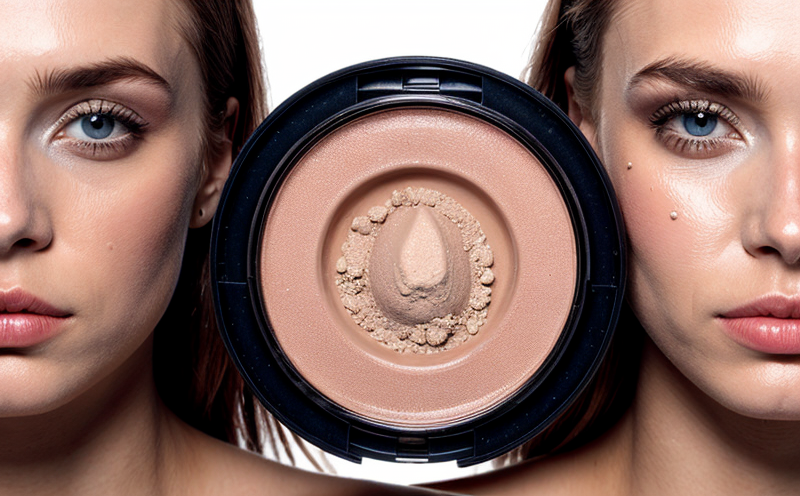Vanadium Content Testing in Cosmetics
The testing of vanadium content in cosmetics is a critical step to ensure product safety and compliance with international standards. Vanadium, while known for its role as an essential trace element, can also pose risks when present at higher levels than recommended. This service involves the precise determination of vanadium content within cosmetic formulations using advanced analytical techniques. The goal is to detect any potential contamination that could lead to adverse effects on consumers.
Vanadium testing in cosmetics requires a meticulous approach due to its role as both an essential nutrient and a potential contaminant. The presence of vanadium can influence the formulation's stability, color retention, and overall quality. Compliance with regulatory requirements such as ISO 17238 ensures that products are safe for consumer use.
The process begins with a thorough analysis of the cosmetic sample to identify vanadium content through various analytical methods. The most common techniques include Inductively Coupled Plasma Mass Spectrometry (ICP-MS) and Flame Atomic Absorption Spectroscopy (FAAS). These methods provide accurate measurements that are essential for regulatory compliance.
Proper specimen preparation is crucial to ensure reliable test results. This involves homogenizing the sample, filtering it if necessary, and ensuring that the sample is representative of the product as a whole. The type of cosmetic being tested—creams, lotions, or liquid products—can affect how the sample is prepared.
Once the sample preparation is complete, the actual testing can commence. For ICP-MS, a solution is created from the homogenized sample and introduced into the instrument for analysis. The process allows for the detection of vanadium at very low levels, providing precise results that are vital for ensuring product safety.
FAAS relies on vaporizing the sample in a flame to release vanadium ions, which are then absorbed by the flame's energy. This method is effective for detecting vanadium in a range of cosmetic products and provides results comparable to those from ICP-MS.
The analytical data obtained during testing is used to determine whether the levels of vanadium meet regulatory standards set forth by bodies such as the European Commission (EU Cosmetic Regulation) and the FDA in the United States.
Customer impact is significant when it comes to vanadium content testing. Regulatory compliance not only ensures product safety but also builds consumer trust, which is essential for brand reputation. By providing accurate test results that align with international standards, this service helps clients avoid costly recalls and legal issues.
- Ensuring regulatory compliance can prevent legal challenges and fines.
- Precision testing protects the brand's reputation by ensuring product safety.
- Compliance with EU regulations is crucial for exporting products to the European market.
Meeting these standards also enhances brand image, as consumers increasingly demand transparency regarding product ingredients. The service offers peace of mind to quality managers and compliance officers responsible for ensuring that all cosmetic products meet rigorous safety and efficacy criteria.
Industry Applications
The vanadium content testing in cosmetics is not limited to just one application but serves several key areas within the industry. Quality assurance departments rely heavily on this service to ensure that their products comply with international standards and consumer expectations. Compliance officers use the results of these tests to make informed decisions about product formulations, ensuring they meet all relevant regulations.
Research and development engineers can utilize vanadium content testing data to innovate safer and more effective cosmetic products. By understanding the levels of vanadium in their formulations, they can optimize ingredient selection and formulation processes. This leads to better performing, longer-lasting cosmetic products that are both safe for use and meet market demands.
Procurement teams also benefit from this service by ensuring that raw materials used in product development comply with regulatory requirements. By testing incoming materials, they can avoid using suppliers who provide non-compliant ingredients, thus maintaining the integrity of their supply chain.
The ability to track vanadium content throughout the manufacturing process is critical for maintaining consistent quality across different batches and production runs. This ensures that every batch of cosmetic product meets the same high standards, thereby enhancing consumer confidence in the brand's reliability.
Use Cases and Application Examples
The testing of vanadium content in cosmetics has various use cases across different applications. One common scenario involves the quality assurance team conducting periodic tests on new product formulations to ensure that they meet safety standards before launch. This helps prevent any potential health risks associated with high levels of vanadium.
Another application is during supplier audits, where testing can verify that raw materials used in production are safe and compliant. This ensures that the final cosmetic product is free from harmful contaminants, thereby maintaining brand integrity.
In research and development, this service allows engineers to experiment with different ingredient combinations while ensuring safety. They can adjust formulations to optimize performance without compromising on safety or regulatory compliance.
For procurement teams, regular testing helps in identifying reliable suppliers who adhere to strict quality control measures. This not only ensures product safety but also strengthens relationships with trusted partners.





